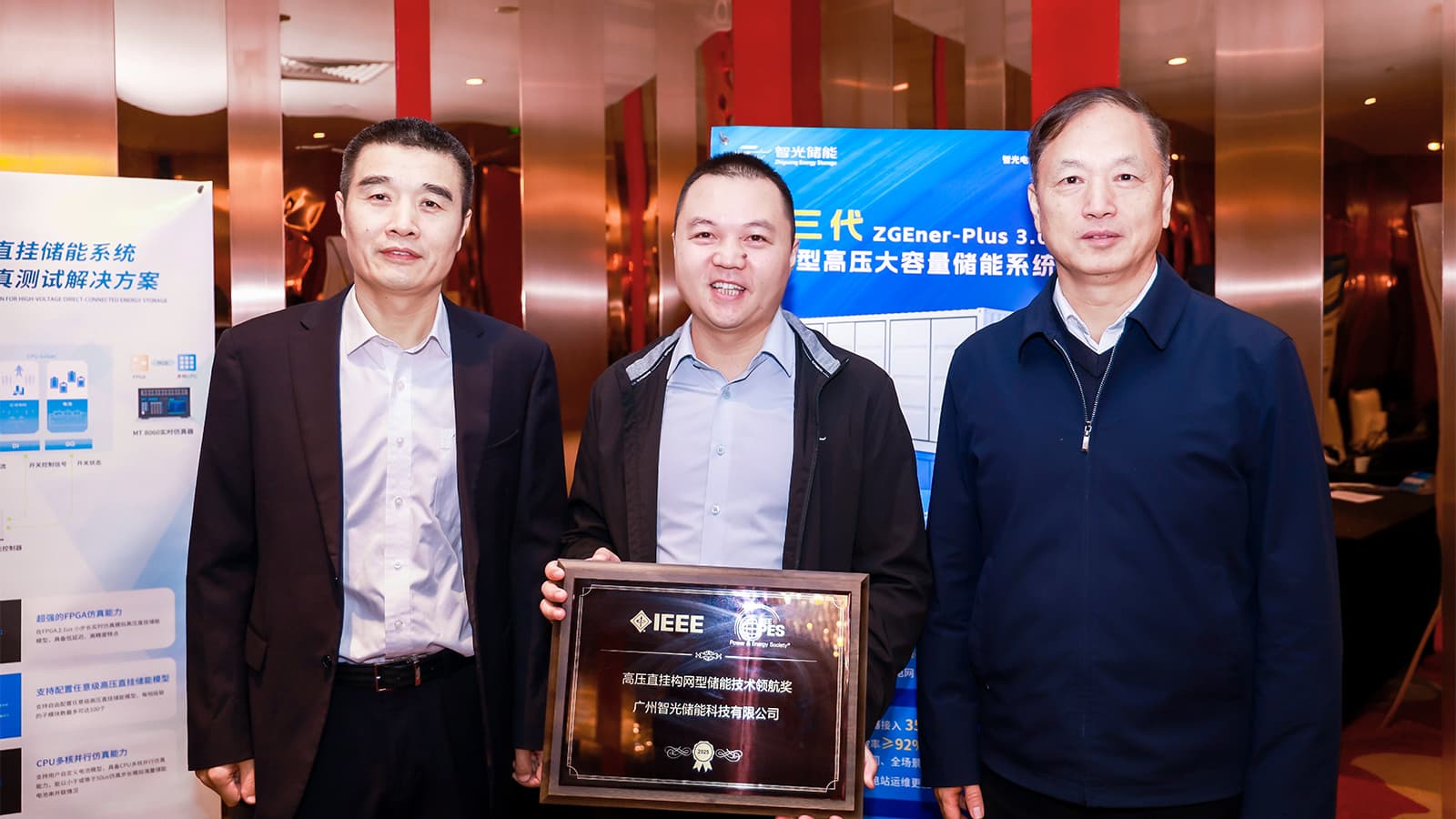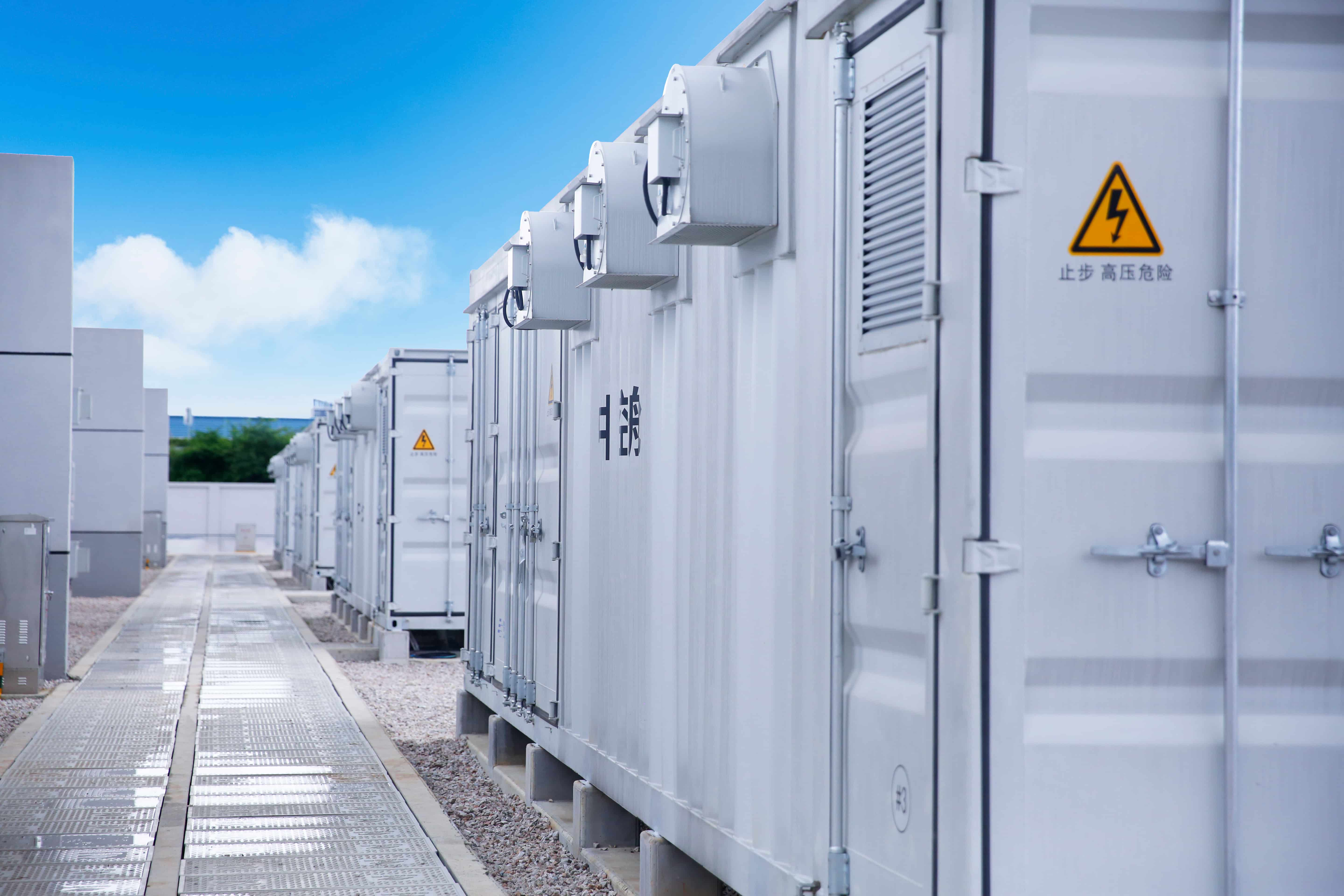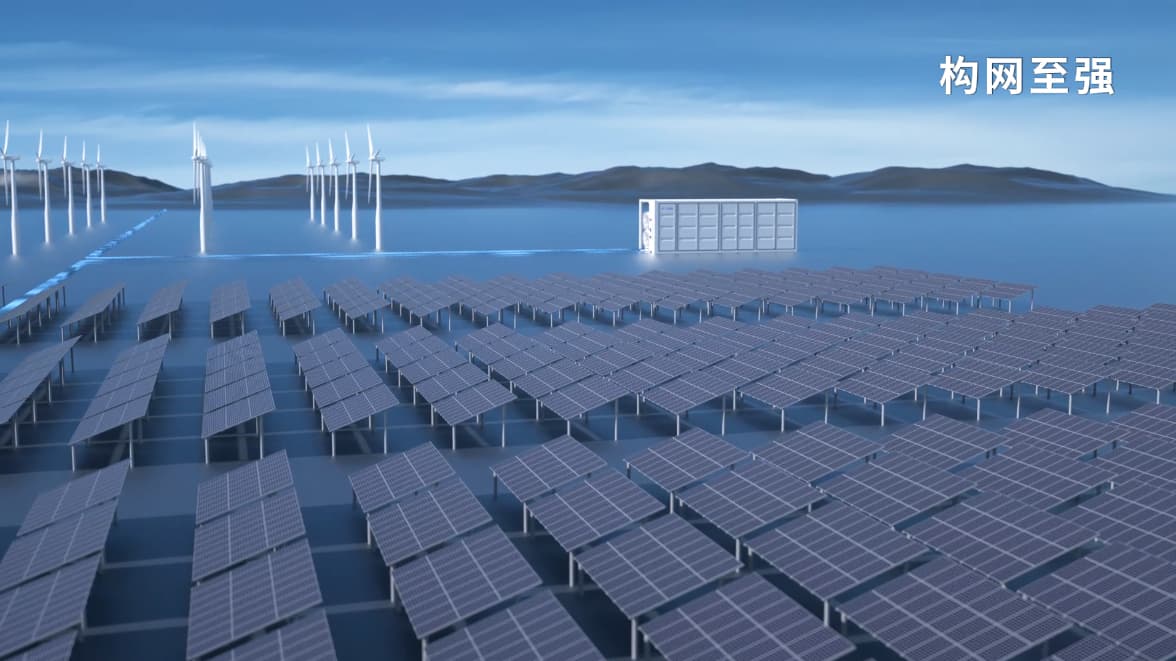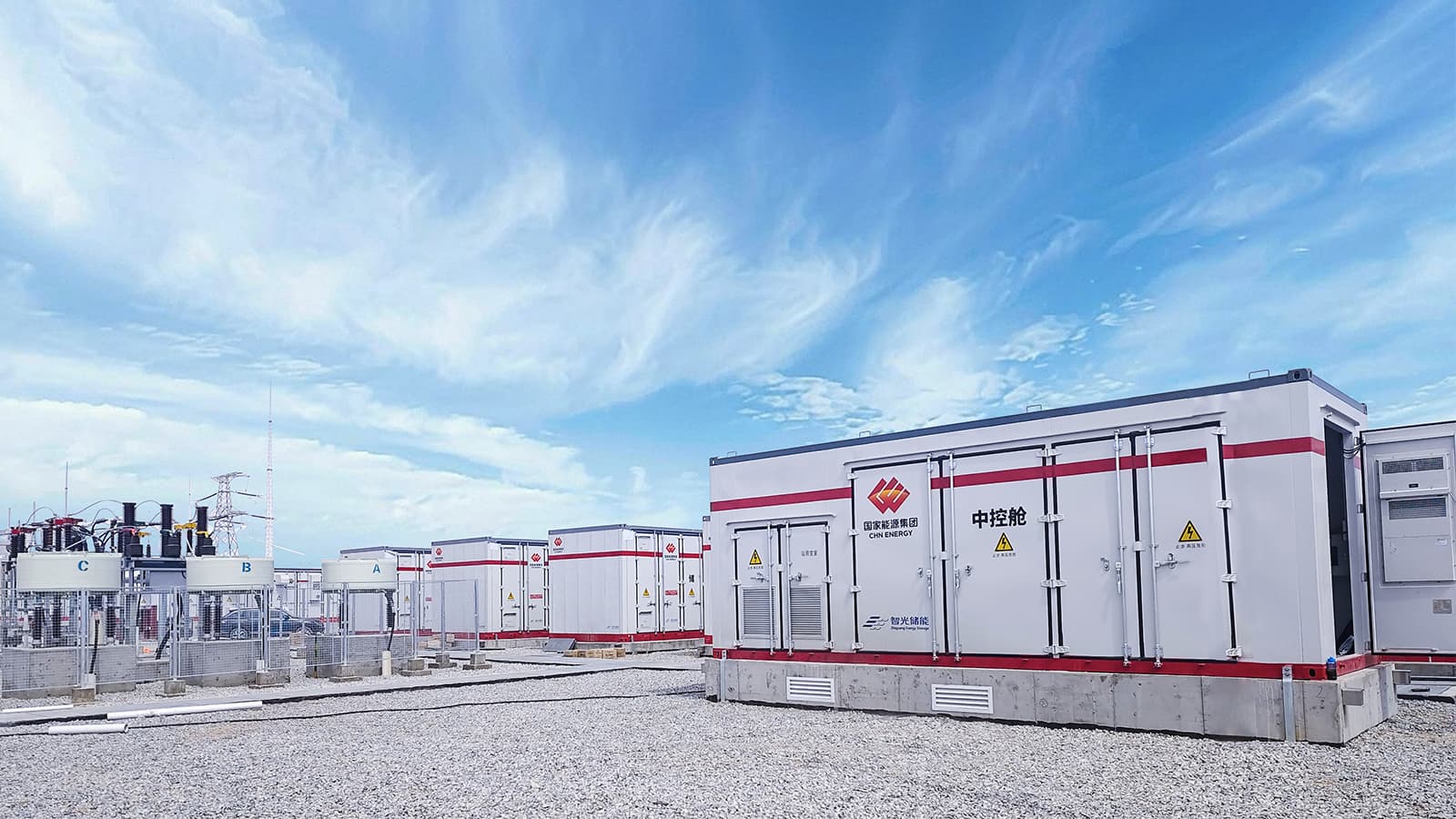On November 1, the IEEE Energy Storage Technology Conference was grandly held in Shanghai. Mr. Fu Jinjian, General Manager of Guangzhou Zhiguang Energy Storage Technology Co., Ltd. (“Zhiguang Energy Storage”), was invited to attend and delivered a keynote speech titled “Breakthroughs in Key Technologies of Grid-Forming Energy Storage Systems and Multi-Scenario Application Research.” His presentation provided an in-depth interpretation of the development path and practical achievements of grid-forming energy storage under current market dynamics.

At present, Zhiguang Energy Storage’s grid-forming projects have been successively commissioned in Gansu, Inner Mongolia, Qinghai, Tibet, Jiangsu, and Guangdong, demonstrating a nationwide momentum of large-scale application.

In recognition of its technological breakthroughs, Zhiguang Energy Storage received the “High-Voltage Direct-Connection Grid-Forming Technology Pioneer Award” at the conference, further consolidating its leadership position in the field of high-voltage, large-capacity cascaded grid-forming energy storage.
1. Tackling the “Double High” Challenge — Grid-Forming Becomes a Global Consensus
As China’s wind and solar installations move toward the gigawatt scale, the traditional grid—dominated by synchronous generators—is undergoing structural changes due to the rapid integration of high shares of renewables and power electronics. Against this backdrop, grid-forming energy storage has emerged as a key technology for balancing renewable volatility and maintaining grid stability, accelerating the transition of wind and solar power from “supplementary sources” to “main power sources.”

From Follower to Enabler: The Role Transformation of Grid-Forming Storage
Unlike conventional grid-following systems that passively respond to grid instructions, grid-forming energy storage acts as an active, intelligent “grid stabilizer.”
A grid-following system is essentially a current source that relies on grid voltage and frequency, offering limited support to system stability.
A grid-forming system, however, functions as a voltage source capable of independently setting voltage parameters and outputting stable voltage and frequency. It employs a power-synchronization mechanism similar to that of synchronous generators, achieving synchronization without relying on a phase-locked loop (PLL). This allows it not only to “form” the grid autonomously but also to operate independently in islanded mode—greatly improving system flexibility and reliability.
2. From Technology Leadership to Value Realization
As the global energy transition advances, grid-forming technology is moving from demonstration to commercial deployment. Leveraging its forward-looking strategy and strong R&D capabilities, Zhiguang has rapidly overcome key technical challenges in grid-forming systems and applied these innovations in China’s first high-voltage cascaded grid-forming energy storage demonstration project—becoming a major force driving the technology’s adoption.

To meet the new power system’s demand for higher power and faster response, Zhiguang has integrated system architecture with advanced grid-forming algorithms to develop a new-generation high-voltage direct-connection energy storage system. It delivers capabilities such as short-circuit current supply, grid inertia support, fast frequency response, reactive power regulation, black start, and seamless grid-connected/island operation.
Compared with low-voltage solutions, high-voltage direct-connection grid-forming systems offer shorter electrical distances to the main grid, larger single-unit capacity, faster response, and greater control stability—perfectly matching the needs of modern power systems.
Traditional low-voltage stations often require hundreds of PCS units working in parallel, making millisecond-level coordination extremely complex. Zhiguang’s high-voltage solution supports over 50 MW per unit, allowing 100 MW-level stations to be built with only a few systems—greatly simplifying control architecture and exponentially improving response speed and reliability.
In addition, the system eliminates the need for transformers by directly connecting PCS output to the grid, avoiding inconsistencies in grid-forming performance between high- and low-voltage sides. Using reactors instead of LCL filters enhances control stability and prevents resonance risks—key reasons it is considered an ideal grid-forming solution.

Zhiguang’s high-voltage grid-forming capability addresses core challenges of new power systems. This capability is not a single feature but a comprehensive “technology portfolio” composed of multiple innovations:
System Architecture Innovation: Introduced a modular, “building-block” design based on standardized energy storage submodules, achieving 100 MW-level single-unit capacity with redundant bypass mechanisms to ensure system stability.
Efficient Battery Management: Utilizes full life-cycle battery monitoring and multi-condition adaptive fast SOC balancing, improving cycle efficiency to over 92% and ensuring optimal charge/discharge utilization.
Intelligent Grid Support: Adopts constant internal potential + adaptive virtual admittance transient control for self-synchronizing voltage source operation, providing dynamic frequency and voltage support without fault detection. Inertia constant adjustable between 1–20s, short-circuit ratio 1.1–20, and sub-20ms reactive current response. For instance, a 25 MW unit carries a rated current of about 412A—50 times lower than comparable low-voltage systems—making it easier to meet 3x overload requirements.
Plant-Level Coordinated Control: Based on high-voltage direct-connection storage, the system supports black start, islanded operation with stable load, and multi-machine oscillation stabilization, enabling synchronous-generator-like behavior for integrated renewable and storage plants.
3. Diverse Applications Validating a New Grid-Forming Paradigm
Zhiguang’s breakthroughs in grid-forming technology are validated through multiple benchmark projects nationwide:

Gansu Guazhou Ganhekou Wind Farm: Achieved black start and island operation of a 330 kV system using “main power-type wind turbines + self-synchronous voltage source storage,” marking the world’s first 35 kV self-synchronous high-voltage direct-connection demonstration.

CHN Energy Qinghai Dachaidan Project: China’s first wide-timescale, multi-technology hybrid grid-forming project integrating seven storage technologies, with Zhiguang’s cascaded high-voltage system serving as the core. Each unit reaches 100 MWh scale, solving traditional voltage imbalance issues.

Inner Mongolia Chuangyuan Metal Project: World’s first grid-forming high-voltage storage system jointly achieving black start with a coal-fired unit, with a total capacity of 91.5 MW/366 MWh—a record for user-side installations.

Jiangsu Jingjiang Special Steel Project: China’s first grid-forming integrated wind–solar–storage microgrid in the steel industry, enabling 100% green power smelting and ranking as the largest user-side storage station in Jiangsu Province.

Through multi-scenario deployment and scaled implementation, Zhiguang’s grid-forming storage not only demonstrates its critical role in “double-high” grids but also enhances grid stability and renewable energy utilization.
As grid-forming storage connects to the grid at scale, coupling effects among synchronous generators and grid-following devices introduce new challenges such as multi-machine synchronization and wideband oscillation. Despite higher initial costs than conventional storage, grid-forming systems provide irreplaceable stability support in high-renewable, weak-grid, and island-grid scenarios—offering unmatched technical and market value.
Looking ahead, as new power systems grow increasingly complex and market mechanisms mature, grid-forming energy storage will become the “ballast” of the grid, underpinning renewables as main power sources. Zhiguang will continue advancing high-voltage cascaded grid-forming technology and demonstration projects to provide reliable and replicable solutions for global energy transition.



